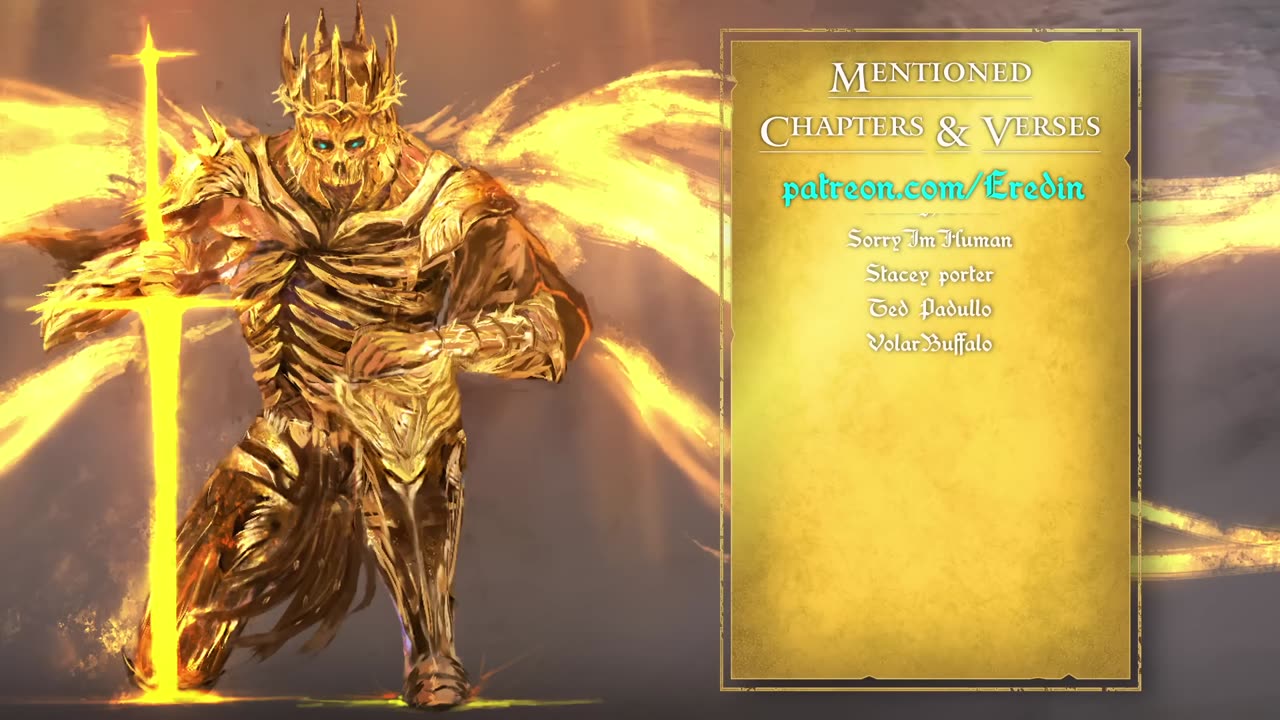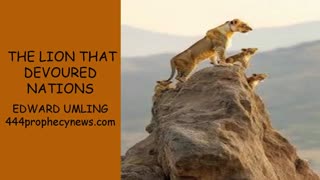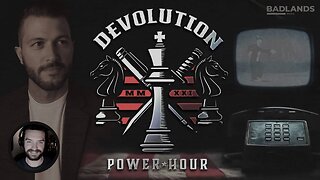Premium Only Content

Nebuchadnezzar: Cursed King, Antichrist, Creator of the Beast System (666)
Eredin
Nebuchadnezzar II (Babylonian cuneiform: Nabû-kudurri-uṣur, meaning “Nabu, watch over my heir”; Biblical Hebrew: נְבוּכַדְנֶאצַּר[d] Nəḇūḵaḏneṣṣar), also spelled Nebuchadrezzar II, was the second Neo-Babylonian emperor, ruling from the death of his father Nabopolassar in 605 BC to his own death in 562 BC. Historically known as Nebuchadnezzar the Great, he is typically regarded as the empire's greatest king. Nebuchadnezzar remains famous for his military campaigns in the Levant, for his construction projects in his capital, Babylon, including the Hanging Gardens of Babylon, and for the role he plays in Jewish history. Ruling for 43 years, Nebuchadnezzar was the longest-reigning king of the Chaldean dynasty. By the time of his death, he was among the most powerful rulers in the world.
Possibly named after his grandfather of the same name, or after Nebuchadnezzar I (r. c. 1125–1104 BC), one of Babylon's greatest ancient warrior-kings, Nebuchadnezzar II already secured renown for himself during his father's reign, leading armies in the Medo-Babylonian conquest of the Assyrian Empire. At the Battle of Carchemish in 605 BC, Nebuchadnezzar inflicted a crushing defeat on an Egyptian army led by Pharaoh Necho II, and ensured that the Neo-Babylonian Empire would succeed the Neo-Assyrian Empire as the dominant power in the ancient Near East. Shortly after this victory, Nabopolassar died and Nebuchadnezzar became king.
Source: https://en.wikipedia.org/wiki/Nebuchadnezzar_II
In Christian eschatology, the Antichrist refers to people prophesied by the Bible to oppose Jesus Christ and substitute themselves in Christ's place before the Second Coming. The term Antichrist (including one plural form) is found four times in the New Testament, solely in the First and Second Epistle of John. The Antichrist is announced as the one "who denies the Father and the Son."
The similar term pseudokhristos or "false Christ" is also found in the Gospels. In Matthew (chapter 24) and Mark (chapter 13), Jesus alerts his disciples not to be deceived by the false prophets, who will claim themselves to be the Christ, performing "great signs and wonders". Three other images often associated with the Antichrist are the "little horn" in Daniel's final vision, the "man of sin" in Paul the Apostle's Second Epistle to the Thessalonians, and the Beast of the Sea in the Book of Revelation.
Source: https://en.wikipedia.org/wiki/Antichrist
In Nebuchadnezzar's dream, a "holy watcher" descends from heaven to pronounce sentence on the tree and king. This is the sole instance of this phrase in the Hebrew Bible, although it echoes the frequent descriptions of God's watchfulness and the word appears several times in the Book of Enoch, where it is usually applied to the fallen angels, but on occasion refers to the holy angels. The watcher's commands to cut down the tree (i.e., Nebuchadnezzar) and strip it are issued, presumably, to the divine beings who carry out God's will.
Symbolic imagery: the tree and the beast
Daniel 4's tree parallels the similar image in Ezekiel 31, where the pharaoh of Egypt is compared to a mighty tree towering above all others with its top in the clouds, a symbol of human arrogance about to be cut down. The metaphor then switches to depict Nebuchadnezzar as a beast dependent on grace for its survival until he learns humility before God. Possibly significantly, the king is restored when he "lifts up" his eyes to heaven.
Source: https://en.wikipedia.org/wiki/Daniel_4
A Watcher is a type of biblical angel. The word occurs in both plural and singular forms in the Book of Daniel (2nd century BC), where reference is made to the holiness of the beings. The apocryphal Books of Enoch (2nd–1st centuries BC) refer to both good and bad Watchers, with a primary focus on the rebellious ones.
Source: https://en.wikipedia.org/wiki/Watcher_(angel
Support the Channel -
Patreon /eredin
YouTube Channel Membership /@eredinlore
-
 1:04
1:04
Christopher's Anti-Dumbass on this Timeline
9 hours ago082725 THE LION THAT DEVOURED NATIONS - EDWARD UMLING
18 -

Drew Hernandez
10 hours agoLGBTQ TERRORIST EXECUTES CATHOLIC KIDS IN MINNEAPOLIS
11.3K11 -
 2:17:08
2:17:08
FreshandFit
6 hours ago10 Top Red Pills About American Women
44.4K18 -
 2:10:26
2:10:26
Badlands Media
11 hours agoDevolution Power Hour Ep. 384: Durham’s Blind Spots, Soros Panic, and Trump’s Economic Warfare
59.6K26 -
 3:17:28
3:17:28
TimcastIRL
6 hours agoTrans Shooter Targets Catholic Kids In Mass Shooting, Leftists Reject Prayers | Timcast IRL
220K61 -
 1:31:29
1:31:29
Brandon Gentile
1 day ago25 Year Wall Street INSIDER: $1M Bitcoin Soon Is Just The START
18.2K -

SpartakusLIVE
7 hours ago#1 Birthday Boy Celebrates with MASSIVE and HUGE 4.8-Hour Stream
50.9K -
 55:54
55:54
Man in America
9 hours agoFrom Oil Barons to Pill Pushers: The Rockefeller War on Health w/ Jeff Adam
47K6 -
 3:02:18
3:02:18
Barry Cunningham
6 hours agoBREAKING NEWS: PRESIDENT TRUMP THIS INSANITY MUST END NOW!
92.8K176 -
 3:58:27
3:58:27
StevieTLIVE
5 hours agoWednesday Warzone Solo HYPE #1 Mullet on Rumble
37.8K